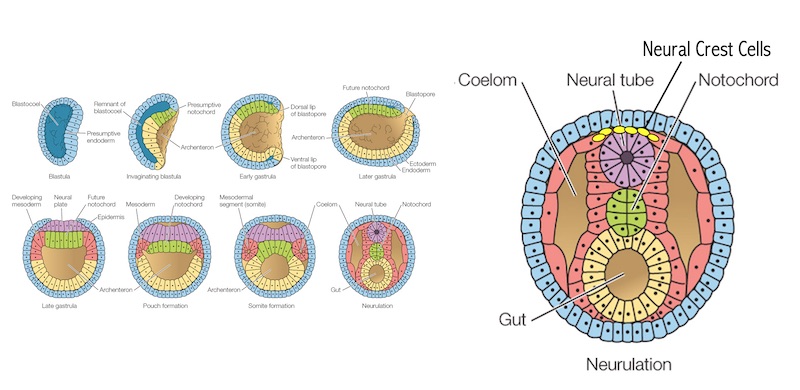Your Dog’s Floppy Ears… Embryogenesis and Genetics
Several published studies summarized here show how embryology and modern genetics begin to answer the biological basis of selective breeding of modern dogs.
It is well established that Australian Dingos and domesticated dogs are all descended from Wolves. The only questions are how and when. Archeology and cave drawings really can’t answer that question. Modern genetics can provide many more answers. Genetics can answer the how or genetic basis of the origin of traits.
No domestic animal has shared more of its evolutionary history in direct contact with humans than the dog (Canis lupus familiaris, also referred to as Canis familiaris), living alongside humans for more than ten thousand years since domestication from its ancestor the gray wolf (Canis lupus). The location, timing, and number of dog domestication events is still debated
Recently published research on the genetics of “Village Dogs” has answered some of the questions. Village Dogs are free-ranging, free-breeding dogs whose ancestors were indigenous to a geographic area. In effect, they are the descendants of the founding population of dogs in a region. Village dogs roam and scavenge for food near human populations and are able to mate freely. The current population of dogs on earth is estimated at 900 million of which only 20% are pets, the remainder being feral and village dogs.
Most modern breeds arose in the last 300 years and contain only a small portion of the genetic diversity found among the vast majority of extant dogs. Instead, semi-feral village dogs are the most abundant and genetically diverse modern dog populations and have undergone limited targeted selection by humans since initial domestication.
A study of “Village Dogs” from many remote areas across the globe which compared village dogs to wolves and domestic dogs revealed that much of the variation of the current breeds lies in about 240 genes which are expressed during embryonic development in “Neural Crest Cells.”
A fertilized ovum divides hundreds of times and eventually becomes a solid ball of cells. Then it becomes a hollow ball of differentiating cells. Eventually a dorsal neural plate forms and turns into a neural tube. The neural tube forms the early brain and spine. Neural Crest Cells are located just above the neural tube.
Neural crest cells are a type of stem cells that travel along defined routes from their starting location near what will become the spinal cord, to their final destinations.

Neural crest cells play a major role in defining the forms and functions of multiple tissues in all animals with backbones including most of the skull, face, cartilaginous tissues (such as dogs’ floppy ears), and even pigmentation of the skin and fur. In addition to changing the outward appearance, these cells ultimately contribute to the development of the brain, nervous system, and adrenal systems, all of which can influence behavior.
Changes in the number or activity of neural crest cells in any of these final body locations can subsequently alter the size, shape, or level of expression of the corresponding trait.
It is interesting that there are human syndromes associated with the same genes in humans. Human syndromes resulting from improper development of neural crest cells include facial deformities and hypersociability. These parallels between dogs and humans are what make understanding dog genetics valuable.
Here is a source link: Pendleton, A. L., Shen, F., Taravella, A. M., Emery, S., Veeramah, K. R., Boyko, A. R., & Kidd, J. M. (2018). Comparison of village dog and wolf genomes highlights the role of the neural crest in dog domestication. BMC Biology, 16(1), 1–21. https://doi.org/10.1186/s12915-018-0535-2

Leave a comment